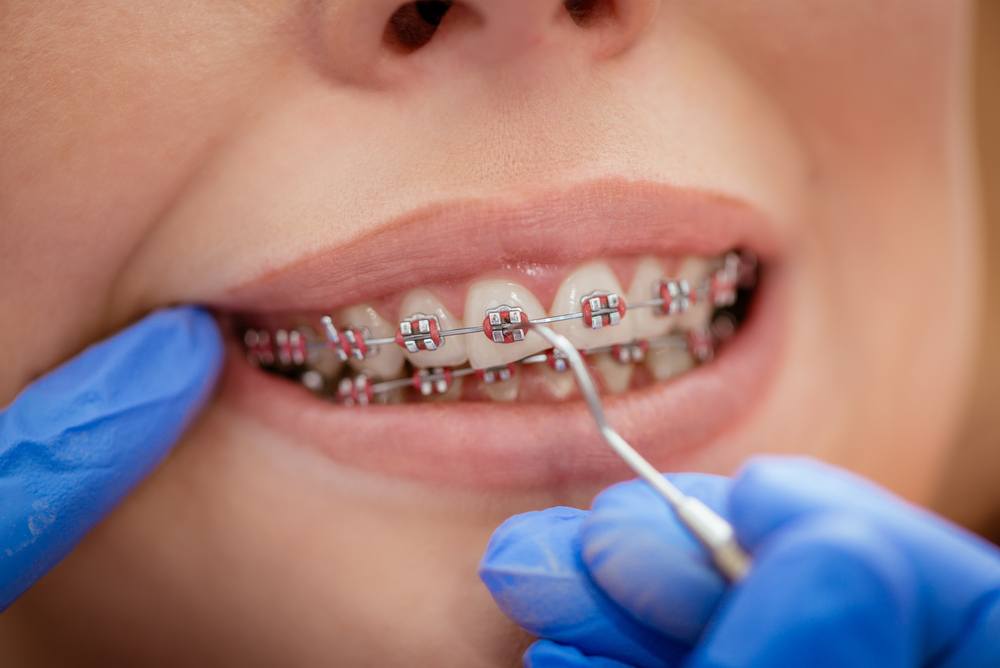Comprehensive Overview to Orthodontics Treatments for Correcting Dental Misalignments
Understanding the complexities of each procedure, including their devices, advantages, and prospective disadvantages, is important in making informed decisions concerning one's orthodontic therapy. As we navigate through the thorough overview to orthodontic procedures for fixing dental imbalances, the detailed information of each method will certainly unravel, dropping light on the path towards a useful and unified oral placement.
Orthodontic Procedures Review

Along with traditional dental braces and clear aligners, orthodontists may additionally advise other interventions like headgear, palatal expanders, or retainers to attend to certain positioning problems (cumming orthodontist). These procedures are tailored to every patient's special demands and may include a mix of therapies to achieve the preferred outcomes. Normal adjustments and surveillance are vital components of orthodontic treatment to make certain progress is on track and to make any kind of required alterations in the process. By undergoing orthodontic treatments, patients can not just attain a straighter grin however likewise enhance their general dental health and wellness and feature.
Standard Dental Braces: Exactly How They Function
When taking into consideration orthodontic treatments for oral misalignments, traditional braces stand apart as a reliable technique for correcting teeth placing. Conventional dental braces are composed of brackets, cords, and bands that work with each other to apply continual pressure on the teeth, gradually relocating them into the desired placement. The braces are connected to the teeth making use of an unique adhesive, and the cables are threaded through the braces. By changing the stress of the wires, orthodontists can regulate the direction and pressure related to each tooth, directing them into correct positioning gradually.
One key element of exactly how typical braces work is the process of bone remodeling. As pressure is put on the teeth through the braces, the bone bordering the teeth is reshaped to support the brand-new tooth settings. This makeover is necessary for the long-term stability of the remedied placement. Patients will need routine changes at the orthodontist's office to make sure the dental braces continue to apply the appropriate stress for effective teeth movement.
Undetectable Aligners: Advantages And Disadvantages
Undetectable aligners use a discreet and practical choice to traditional braces for dealing with oral imbalances. These clear, custom-made trays are virtually undetectable when put on, making them an enticing alternative for people looking for a more visually pleasing orthodontic therapy. Among the primary advantages of undetectable aligners is their removability, enabling less complicated upkeep of dental health contrasted to traditional dental braces. Individuals can remove the aligners before eating or brushing their teeth, minimizing the danger of food getting embeded the home appliance and simplifying the cleansing procedure.

Surgical Orthodontic Options
Surgical treatments in orthodontics present practical options for resolving complicated oral imbalances that may not be successfully dealt with via traditional orthodontic therapies. While undetectable aligners and standard dental braces can deal with lots of orthodontic issues, certain cases require surgical treatment to accomplish ideal results. Surgical orthodontic options are typically recommended for severe malocclusions, significant jaw disparities, and instances where the underlying bone framework requires alteration to attain appropriate positioning.
One common medical orthodontic treatment is orthognathic surgical treatment, which involves rearranging the jaws to fix functional concerns such as trouble eating or speaking. This surgery is usually done in partnership with an orthodontist who aids line up the teeth before and after the treatment. Surgical orthodontics may also entail procedures to reveal influenced teeth, eliminate excess gum cells, or reshape the jawbone to develop a much more unified facial account.
Before taking into consideration surgical orthodontic alternatives, individuals undertake a detailed evaluation to establish the necessity and possible benefits of such treatments. orthodontist. While surgical procedure may appear complicated, it can considerably improve both the feature and appearances of the smile in situations where standard orthodontic treatments fail
Retainers and Post-Treatment Care

Failing to abide with post-treatment go to the website treatment instructions can result in relapse, where the teeth progressively move back towards their original settings. Regular retainer wear, good dental hygiene, and regular oral exams are necessary for keeping the outcomes achieved with orthodontic surgery and making sure the long-term security of the corrected dental alignment.
Conclusion
To conclude, orthodontic treatments provide numerous options for correcting dental imbalances. Conventional dental braces use steel brackets a dentist near me and cords to move teeth right into proper positioning. Undetectable aligners offer a more discreet choice but may not appropriate for all instances. Surgical orthodontic options are readily available for more serious imbalances. Retainers are commonly used post-treatment to maintain the new positioning. On the whole, orthodontic procedures can effectively enhance dental health and visual appearance.
As we navigate with the thorough guide to orthodontic treatments for dealing with dental imbalances, the detailed details of each approach will unfold, losing light on the path toward a unified and functional dental placement. - cumming braces
One of the most typical orthodontic therapies is the use of braces, which consist of steel brackets and cords that apply mild stress to gradually move teeth into the wanted setting.When considering orthodontic therapies for dental imbalances, conventional dental braces stand out as a time-tested technique for remedying teeth positioning. Furthermore, invisible aligners may not be appropriate for complex orthodontic problems that call for even more substantial teeth activity, as they are generally suggested for moderate to moderate situations. Retainers are tailor-made orthodontic gadgets created to hold teeth in their dealt with placements after the conclusion of orthodontic therapy.